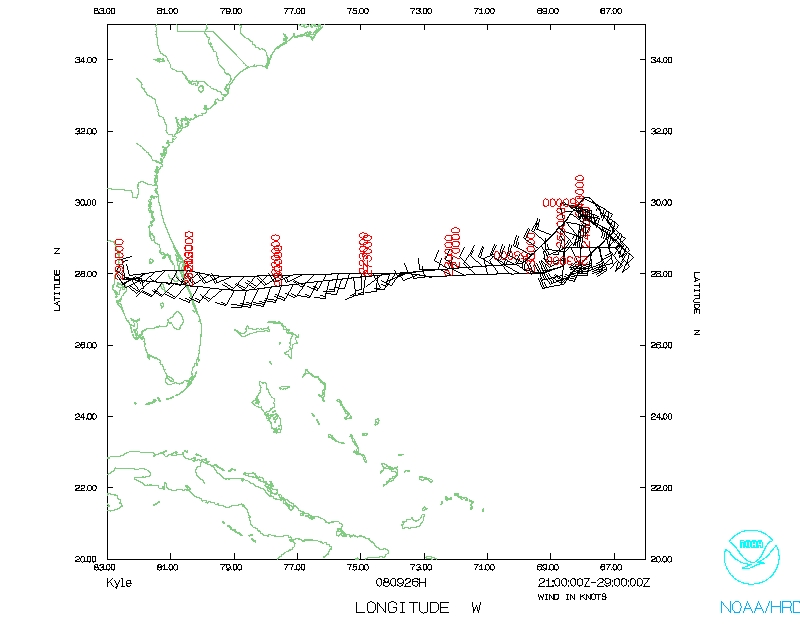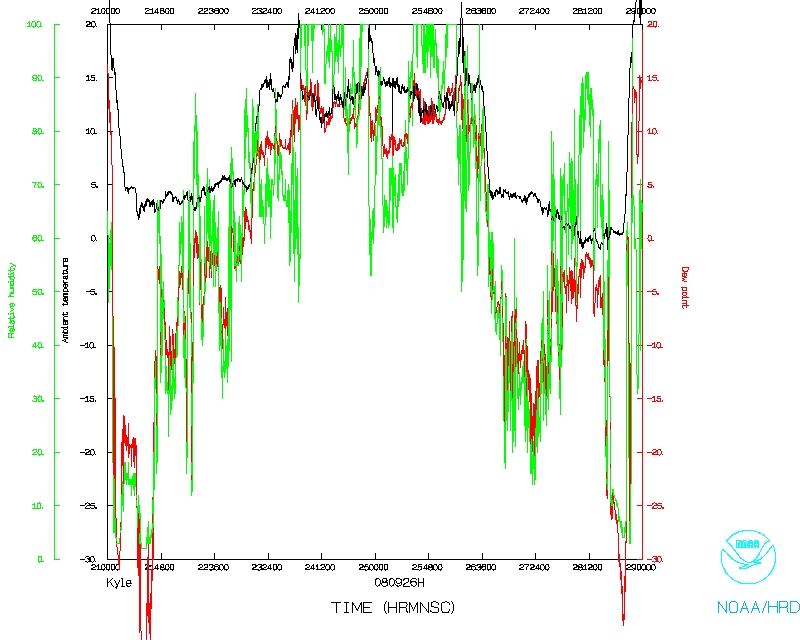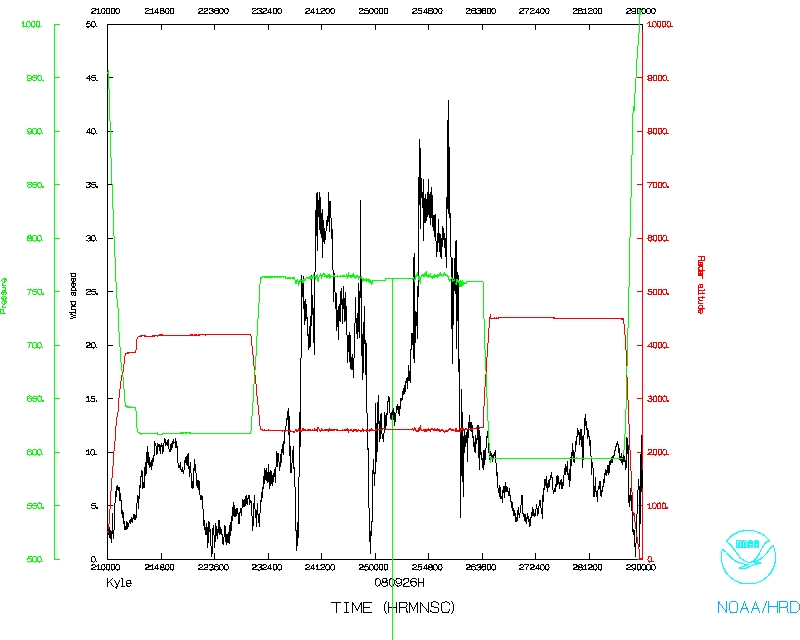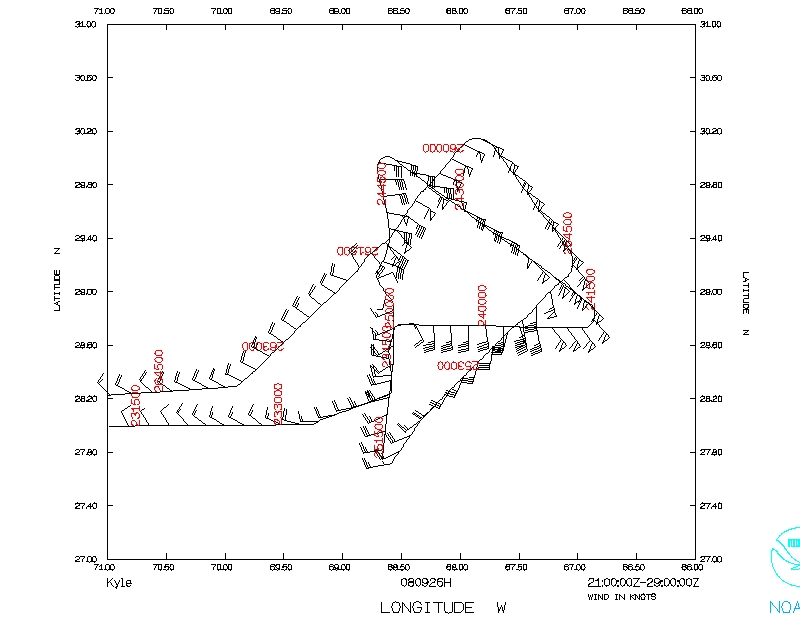Mission Summary
20080926H1 Aircraft 42RF
Kyle Ocean Winds flight 2008
Scientific Crew (42RF)
| Lead Scientist | Sim Aberson |
| Radar Scientist | Shirley Murillo |
| Dropsonde Scientist | Kathryn Sellwood |
| NESDIS Scientist | Paul Chang |
| NESDIS Scientist | Zorana Jelenak |
| NESDIS Scientist | Joe Manus |
Flight Crew (42RF)
| Pilots | Mark Nelson
Scott Pierce
Al Girimonte |
| Flight Director | Barry Damiano |
| Navigator | Joe Bishop |
| Flt. Eng. | Greg Bast
Steve Wade |
| Data Tech | Jim Roles |
| Elec. Tech | Bill Olney
Joe Bosko
Leonard Miller |
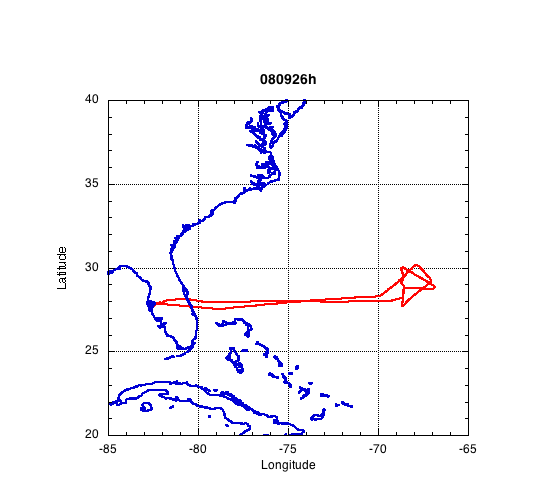
Figure 1. Flight track for 20080926H1
Mission Plan :
A mission into Tropical Storm Kyle. Though the central pressure had increased
15 hPa since the previous day, NHC continued to forecast Kyle to intensity
into a hurricane. The plan is for a figure-4 pattern and then Ocean Winds.
Mission Summary :
| Take off
| Landing
| MacDill AFB, FL | 20:57 UTC
| MacDill AFB, FL | 04:57 UTC
| |
Because of the disorganized state of Kyle, the initial approach toward the IP
was well south of where it should have been. Thus, the flight track (see
Fig. 1 above) showed a large jog to the north to get near the flight-level
center. During the first passage through the center, it because evident that
Kyle was very tilted, likely due to shear, with the surface wind speed minimum,
the flight-level wind speed minimum, and the extrapolated surface pressure
minimum all displaced from each other by more than 25 nmi
(Fig. 2). In addition, the strong asymmetry
with the sharpest gradients on the east side was clearly evident. The tilt
with height can clearly be seen in the realtime radar analyses sent from the
plane (Fig. 3).
Just to the east of the center, a curious feature was observed
(Fig. 4). Flight-level wind speeds rose quickly
once the aircraft entered the region of convection displaced east of the
center, and lightning because visible. Just after midnight UTC, the surface
wind speed rose suddenly to near 70 kt, and a 6 hPa dip in the extrapolated
surface pressure occurred nearby. The flight-level wind speed also rose to
near 62 kt in this region. The data suggest that the aircraft encountered a
mesovortex, but without any associated vertical velocity maximum.
Two more passes through the center were completed. The vortex tile decreased
in time, and the direction changed from a northeastward tilt from the surface
to more of a northward tilt as time progressed (Fig.
5 and Fig. 6).
Problems :
The mission began late because a number of AOC crewmember were at the 120-h
30-day limit for flying and needed to get waivers to fly the mission. AOC did
not realize this beforehand since this was only the second time the limit was
reached during hurricane operations.
Sim Aberson
Nov. 19, 2008
Mission Data :
Dropsonde plots
700 mb
850 mb
925 mb
1000 mb
surface
One second listing
NetCDF listing
Page last updated February 25, 2008
Return to Mission page.

